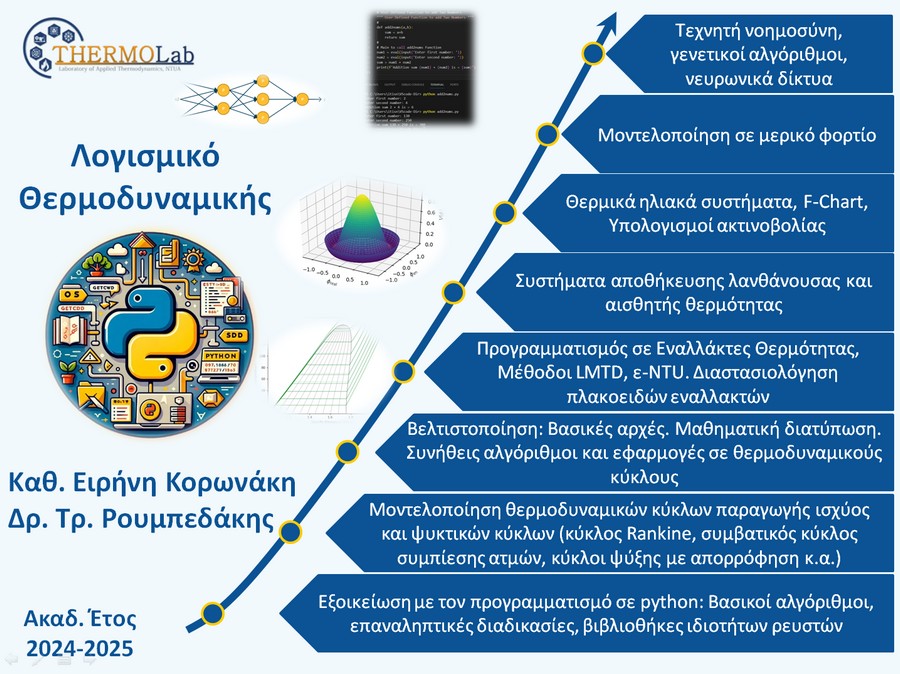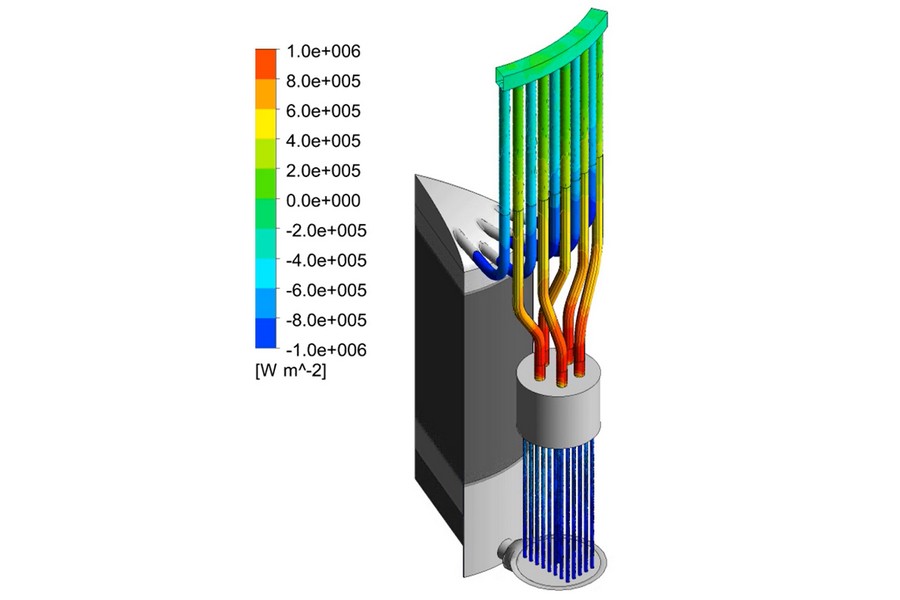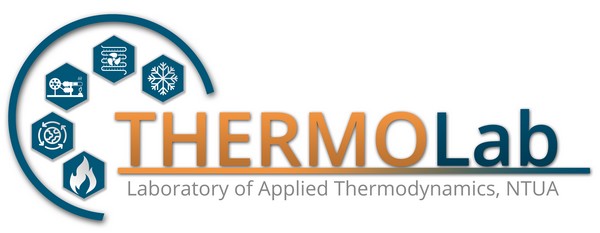Software
Lab-developed Software

The computational codes developed by the laboratory research staff include:
- Codes for the thermophysical properties of salts, glycols, and ammonia,
- AMOCO: simulation of cryocoolers and Stirling heat engines,
- Computational code of adiabatic model of thermodynamic analysis as well as its upgraded version which also allows for the addition of the capacity of the regenerator, the calculation of energy dissipation, as well as the pressure drop developed during the reciprocating movement of the gas in the engine spaces,
- Computational code for the regenerator thermodynamic optimization,
- Computational code for the thermodynamic optimization of Stirling engines based on the model developed by R. Tew for the needs of the NASA space program,
- One-dimensional simulation of evaporative coolers,
- One-dimensional and two-dimensional absorption heat pumps,
- Simulation of open evaporative cycle systems with solid desiccant in active and passive rotary exchangers,
- Simulation of open evaporative cycle systems, adiabatic and non-adiabatic, with liquid desiccants (LiCl, LiBr, CaCl2).


Python is an interpreted, general-purpose, high-level programming language. The Python Package Index (PyPI) hosts thousands of third-party modules for Python. Both Python standard library and community-contributed modules offer endless possibilities. It is a dynamically typed programming language distinguished for its ease of learning as well as its numerous libraries greatly facilitating several common tasks.
Commercially available Software
The software procured and used by the Laboratory is aimed at the design, analysis and simulation of thermodynamic cycles and heat and mass transfer systems. This software includes:

Mathcad is a powerful computing tool that allows users to enter, edit, and solve equations, as well as visualize and graph their results. Mathcad is an innovation in technical calculations, as it is the only application that combines mathematical power, visual presentation and reporting capabilities, as well as collaboration capabilities required by professionals in every branch of technical and scientific research, as well as by students of every discipline.

MATLAB is an easy-to-use and flexible computing environment for implementing scientific applications in a wide range of fields, such as engineering calculations, design and analysis of control systems, signal processing and telecommunications systems, control of experimental setups and measurement collection, and economic data modelling and analysis. The MATLAB environment supports performing mathematical calculations and complex operations in specialized application areas as it contains a set of functions and external libraries for numerous applications.

COMSOL Multiphysics software enables the engineer to solve complex and interactive physical phenomena using the finite element method. It is an ideal modeling and design platform for a wide range of applications such as sensors and microelectromechanical devices, construction analysis problems and geotechnical applications, design of acoustic devices, modeling, and analysis of heat exchangers, mixing devices and reactors and in general, any design and modeling problem of coupled physical phenomena.

Ansys finite element analysis software is used to simulate computer models of structures, electronics, or machine components to analyze strength, hardness, elasticity, temperature distribution, electromagnetism, fluid flow, and other characteristics. Ansys is used to determine how a product will perform with different specifications. For example, Ansys software can simulate how the standard β-type Stirling engine works.


